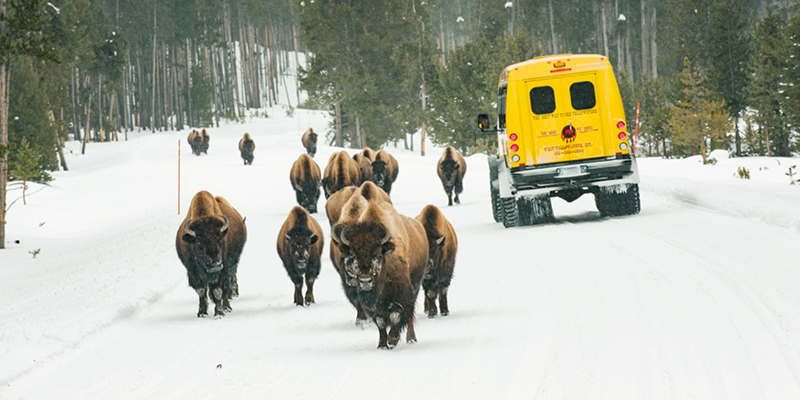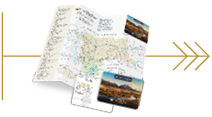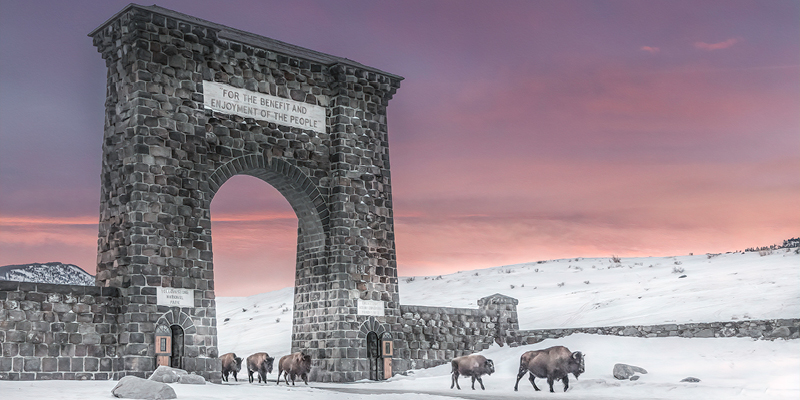Did You Know? 10 Facts about the Yellowstone Bison Herd
Photo by Bridger Peaks Photography
Bison is one of the main attractions in Yellowstone National Park. These enormous animals roam free, often causing traffic jams as herds casually stroll down the middle of the road. They may seem docile as they openly mingle around park visitors, but they are not to be trusted. The National Park Service recommends you stay 25 feet from bison. As one park ranger explained, when they start stomping their feet or shaking their head, you know you are too close and need to slowly back away.
Watching this magnificent creature (from a safe distance) is a sight to behold. You can find them year-round in the Hayden and Lamar Valleys, foraging in the grasslands during the summer months. They enjoy the hydrothermal areas along the Madison River, Blacktail Deer Plateau, Tower, and the Gardiner Basin in the winter.
The story of bison in North America is essential from both cultural and conservation perspectives. To better understand, we've collected some of our favorite facts!

- Yellowstone is the only place where bison have lived continuously since prehistoric times.
- There were once 30 million bison in North America. A mass slaughter in the late 1800s brought the population down to around 1,000 by the turn of the 20th century. Most of the remaining bison were held in captivity on private land, except for a small herd in Yellowstone National Park. Today, the 5,400 Yellowstone bison are considered direct descendants of the west's last herd of wild bison.
- Yellowstone bison are unique because of their high genetic diversity. These bison are free from any cattle genes and are considered a valuable source to expand the population. Native American tribes see these bison as directly linked to their ancestral descendants because the animals have always remained in the park, where their ancestors also roamed.
- Bison are the largest land-dwelling mammal in North America. Male bison weigh approximately 2,000 pounds, and females weigh around 1,100 pounds.
- During the breeding season (called the rut), mature males display dominance over other males by bellowing, wallowing, and fighting. Winners earn the right to mate with receptive females.
- Herds can grow up to 1,000 animals during the rut, but once the breeding season is over, the males separate and spend the rest of the year alone or in small groups.
- Bison are foragers, eating grasses, sedges, and other plants for 9-11 hours per day.
- Wolves and grizzly bears are the only large predators of adult bison.
- Yellowstone bison travel a greater distance than any other ungulate in the Greater Yellowstone Ecosystem. Most bison travel about 1,000 miles over the year, leaving and returning to the same areas.
- Yellowstone National Park has played a crucial role in conserving wild bison in North America. They now manage a growing population of migratory bison that roam onto private land through the Bison Conservation Transfer Program. Listen to this podcast from the National Park Service to learn more.



